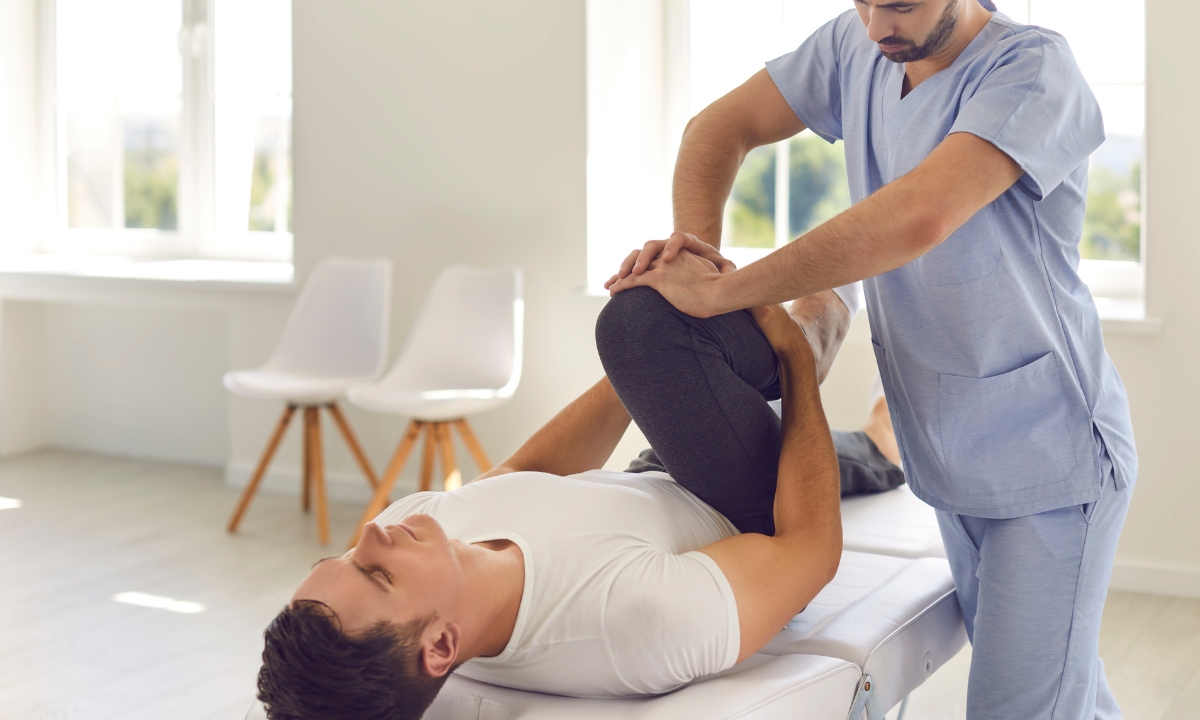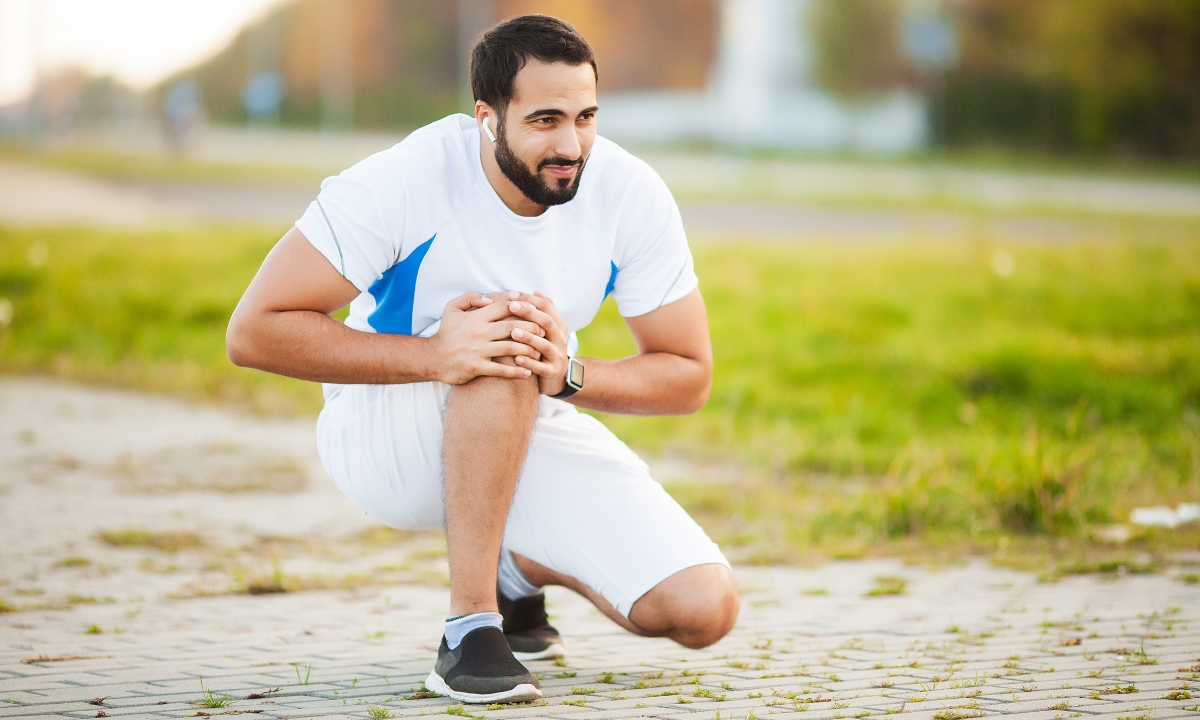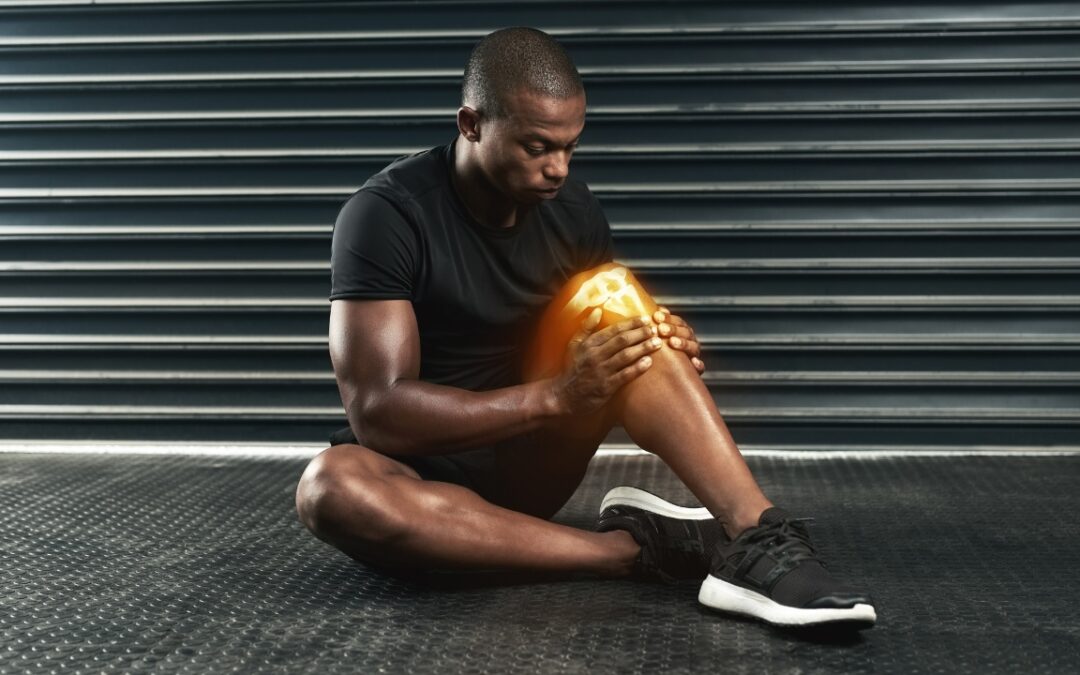“The pain you feel today will show itself as strength tomorrow.” – Tunde Oyeneyin
All runners are familiar with the normal discomfort and pain that comes with running. But this is to be expected. However, for avid runners, few things are more frustrating than being sidelined by an injury. And one of the most common issues plaguing runners of all levels is patellofemoral pain syndrome, better known as “Runner’s Knee.”
Characterized by pain around the kneecap, it can significantly hinder your performance and enjoyment of physical activity. While the name suggests it primarily affects runners, this condition can impact anyone involved in sports or activities that involve repetitive knee bending. This condition can be a persistent and painful problem, but with the right approach to prevention and treatment, you can get back to running strong and pain-free.
While the name suggests it’s exclusive to runners, anyone who engages in activities involving repetitive knee bending can be at risk. Read on as we explain runner’s knee is, how it develops, and what you can do to prevent and treat this common injury.

Understanding Runner’s Knee
Runner’s knee is a broad term that describes pain around the kneecap (patella). This pain typically occurs when the patella is not tracking properly in the femoral groove, leading to irritation of the soft tissues around the knee. This misalignment can lead to inflammation, pain, and discomfort.
While the condition is particularly prevalent among runners, it can also affect other athletes who engage in activities that place repetitive stress on the knee joint, such as cycling, jumping, or skiing.
The exact cause of runner’s knee can vary from person to person, but common contributing factors include:
-
- Overuse: Repeated stress on the knee joint from running or other high-impact activities can lead to inflammation and irritation of the tissues around the kneecap.
- Muscle Imbalances: Weakness or tightness in the muscles surrounding the knee, particularly the quadriceps, hamstrings, and hip muscles, can cause improper patellar tracking.
- Improper Footwear: Wearing shoes that do not provide adequate support or that have worn-out soles can alter your gait, placing additional strain on the knee joint.
- Biomechanical Issues: Structural abnormalities, such as leg length discrepancies, foot pronation, flat feet, high arches, knee alignment problems, or misalignment of the hips and legs, can contribute to improper knee mechanics and increase the risk of developing runner’s knee.
- Sudden Increase in Activity: Rapidly increasing the intensity or duration of exercise can overload the knee.
Symptoms of Runner’s Knee
The most common symptom of runner’s knee is a dull, aching pain around the front of the knee, particularly around the edges of the kneecap. This pain often worsens during activities that involve bending the knee, such as running, walking up or down stairs, squatting, or sitting for long periods.
Other symptoms may include:
- A feeling of weakness or instability in the knee
- Swelling around the kneecap
- A grinding or grating sensation when the knee is bent, or a clicking or popping sensation
- Pain that increases with prolonged activity
Preventing Runner’s Knee
Prevention is key when it comes to avoiding the pain and frustration associated runner’s knee. Here are some strategies to help you keep this injury at bay:
- Strengthen Your Muscles: Building strength in the muscles that support the knee, particularly the quadriceps, hamstrings, glutes, and hip abductors, can improve patellar tracking and reduce the risk of injury. Focus on exercises such as squats, lunges, leg presses, and hip bridges.
- Improve Flexibility: Tight muscles can pull on the kneecap and contribute to improper tracking. Incorporate stretching and foam rolling into your routine to maintain flexibility in the quads, hamstrings, calves, and hip flexors. Yoga and Pilates can also be beneficial for improving overall flexibility.
- Wear the Right Shoes: Choose running shoes that provide adequate support and cushioning for your feet. If you have flat feet or other biomechanical issues, consider using orthotic inserts to help correct your gait.
- Gradually Increase Your Mileage: Avoid ramping up your running distance too quickly, as this can place excessive stress on your knees. Follow the 10 percent rule, which suggests increasing your weekly mileage by no more than 10 percent to allow your body to adapt gradually.
- Listen to Your Body: Pay attention to any signs of pain or discomfort in your knees, and don’t ignore them. If you experience pain, take a break from running and allow your body to recover. Pushing through the pain can lead to more serious injuries.
- Cross-training: Engage in low-impact activities like swimming or cycling to reduce stress on the knees.
Treating Runner’s Knee
If you’re experiencing runner’s knee, it’s essential to seek professional help from a physical therapist or soft tissue therapist. They can assess your condition, develop a personalized treatment plan, and provide guidance on recovery. And if you develop runner’s knee, don’t despair—there are several effective treatment options available to help you recover and get back to your training routine:
- Rest, Ice and Compression: The first step in treating runner’s knee is to rest the affected knee and avoid activities that cause pain. Apply ice to the knee for 15-20 minutes several times a day to reduce inflammation and alleviate pain. Elevate your leg to reduce swelling. In addition, you can wear a knee brace or compression sleeve for support.
- Physical Therapy: Working with a physical therapist can be highly beneficial in treating runner’s knee. A therapist can assess your biomechanics, identify any muscle imbalances or weaknesses, and design a personalized exercise program to address these issues. Strengthening and stretching exercises, along with techniques such as soft tissue massage and taping, can help improve knee function and reduce pain. Soft tissue techniques like massage and myofascial release can address muscle tension and restrictions.
- Modify Your Activities: While recovering from runner’s knee, it’s important to avoid activities that exacerbate the pain. Instead, focus on low-impact exercises such as swimming, cycling, or using an elliptical machine to maintain your fitness without placing additional stress on your knees.
- Gradual Return to Running: Once your symptoms have improved, you can gradually return to running. Start with short, easy runs on flat surfaces, and gradually increase your distance and intensity. Continue to incorporate strength training, stretching, and proper footwear into your routine to prevent a recurrence of Runner’s Knee.
- Consider Gait Analysis: If you’ve had recurring issues with runner’s knee, it may be worth undergoing a gait analysis. A professional assessment of your running form can help identify any biomechanical issues that may be contributing to your injury, allowing for targeted interventions to correct your stride.
Another approach is to make use of orthotics. These are custom-made shoe inserts to address foot biomechanics and reduce knee stress. According to a post at BalanceHealth.com,
“Custom orthotics combined with a supportive running shoes are very effective in treating runner’s knee that is due to flat feet or over pronation.”
The Role of Physical and Soft Tissue Therapy
Physical and soft tissue therapy play a crucial role in managing and overcoming runner’s knee. Therapists can provide:
- Pain relief: Effective techniques to reduce pain and discomfort.
- Functional restoration: Exercises to restore normal movement patterns and improve knee function.
- Preventative measures: Education and guidance on how to prevent recurrence.
- Personalized treatment plans: Tailored approaches based on your specific needs and goals.
When to Seek Professional Help
If you’re experiencing runner’s knee, seeking professional help is essential. A physical therapist can assess your condition, develop a personalized treatment plan, and provide guidance on exercises and stretches. By combining expert care with consistent self-management, you can effectively address runner’s knee and return to your favorite activities.
If you’re suffering from chronic knee pain, it’s important to consult with a healthcare professional for an accurate diagnosis and appropriate treatment plan. Ignoring runner’s knee can lead to chronic pain and long-term complications.
By understanding the causes, symptoms, and prevention strategies for runner’s knee, you can take steps to protect your knees and enjoy an active lifestyle. If you’re struggling with knee pain, or if your knee pain persists despite self-care measures, don’t hesitate to seek help from a physical therapy or soft tissue therapy professional.
Runner’s knee can be a frustrating injury, but with proper understanding, prevention, and treatment, it can be managed effectively. By incorporating the tips outlined in this article into your routine, you can significantly reduce your risk of developing runner’s knee and enjoy a pain-free active lifestyle.

Taking a Firm Step Towards Pain-Free Movement
Runner’s knee is a common but manageable injury that doesn’t have to keep you from enjoying your favorite activities. By understanding the causes, symptoms, and treatment options, you can take proactive steps to prevent this debilitating condition and ensure a full recovery if it does occur.
Remember, the key to staying injury-free is to listen to your body, maintain balanced muscle strength and flexibility, and seek professional guidance when needed. With the right approach, you can keep running pain-free for miles to come.
If you’re experiencing foot pain and suspect your gait might be a contributing factor, don’t hesitate to seek help. At Pain and Performance Solutions, our trained therapists can assess your gait, identify the root cause of your discomfort, and develop a personalized treatment plan to help you achieve pain-free and efficient movement.
Contact us today to schedule an appointment and take the first step to living without pain.
